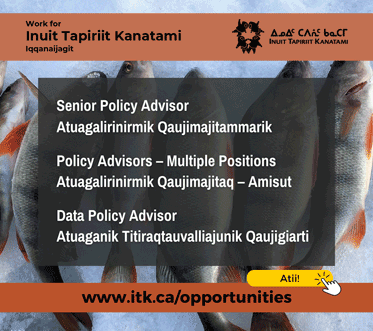Offshore oil-gas assessment meetings in Iqaluit this week
Nunavut Impact Review Board hosts early scoping sessions over two nights

This draft map shows the approximate area that the Nunavut Impact Review Board’s strategic environmental assessment of Baffin Bay and Davis Strait will cover. (FILE PHOTO)
Iqaluit residents will get a chance to participate in public sessions this Nov. 15 and 16 for a big environmental review of oil and gas resources in Baffin Bay and Davis Strait.
The Nunavut Impact Review Board will hold the meetings at the Roman Catholic parish hall, starting at 6:30 p.m. on each of those days.
It’s part of the first phase of a process that started earlier this year called a strategic environmental assessment, or SEA.
The Iqaluit meetings are part of an early “scoping” process aimed at creating a master list of priorities for the strategic assessment.
The final version of the scoping document is supposed to be completed by February 2018, and the SEA is supposed to be completed by March 2019, when the NIRB will submit a final report.
The Liberal government asked the NIRB to do the SEA this past February, following an earlier commitment by the previous Conservative government that was stalled for nearly three years.
Ottawa wants the NIRB to look at oil and gas resources in Baffin Bay and Davis Strait and the potential environmental and socio-economic impacts of developing them.
The NIRB’s assessment will inform Ottawa’s review of its five-year ban on Arctic offshore oil and gas licences, announced in late 2016.
According to documents on NIRB’s website, the strategic environmental assessment will “incorporate available scientific information, Inuit Qaujimatuqangit, other types of traditional knowledge, and public feedback.”
The goal of the strategic assessment will be to “improve understanding of potential types of oil and gas related development activities that could one day be proposed within the Canadian waters of Baffin Bay and Davis Strait,” the NIRB said.
The NIRB added that while the assessment’s focus includes all of Baffin Bay and Davis Strait within Canada’s borders, “only the Canadian waters outside the Nunavut Settlement Area would be considered for possible development.”
The proposed Lancaster Sound National Marine Conservation Area, which previously held a number of Shell oil permits granted in 1970s, will be excluded from the scope of possible development scenarios, the NIRB said.
Canada’s federal government announced it is banning offshore oil and gas development in Arctic waters as of last December, in a joint strategy with the United States after the creation of the U.S.-Canada Shared Arctic Leadership model.
The Trudeau government said they will review the development ban in five years, with the first window for review slated for 2021.
The newly named Crown-Indigenous Relations and Northern Affairs department has provided an initial scope list for the project which will be refined after meetings that have already been held in Pangnirtung, Qikiqtarjuaq, Cape Dorset and Kimmirut, along with the upcoming consultation in Iqaluit this Thursday and Friday.
The Qikiqtani Inuit Association is already collecting Inuit Qaujimajatuqangit to be included in the assessment, the NIRB said.
The strategic environmental assessment started prior to a major Supreme Court of Canada victory by residents of Clyde River in July, which successfully overturned a decision from the National Energy Board allowing seismic testing for oil and gas in the waters of Baffin Bay.
Readers can find more information about the SEA process on NIRB’s public registry.





(0) Comments